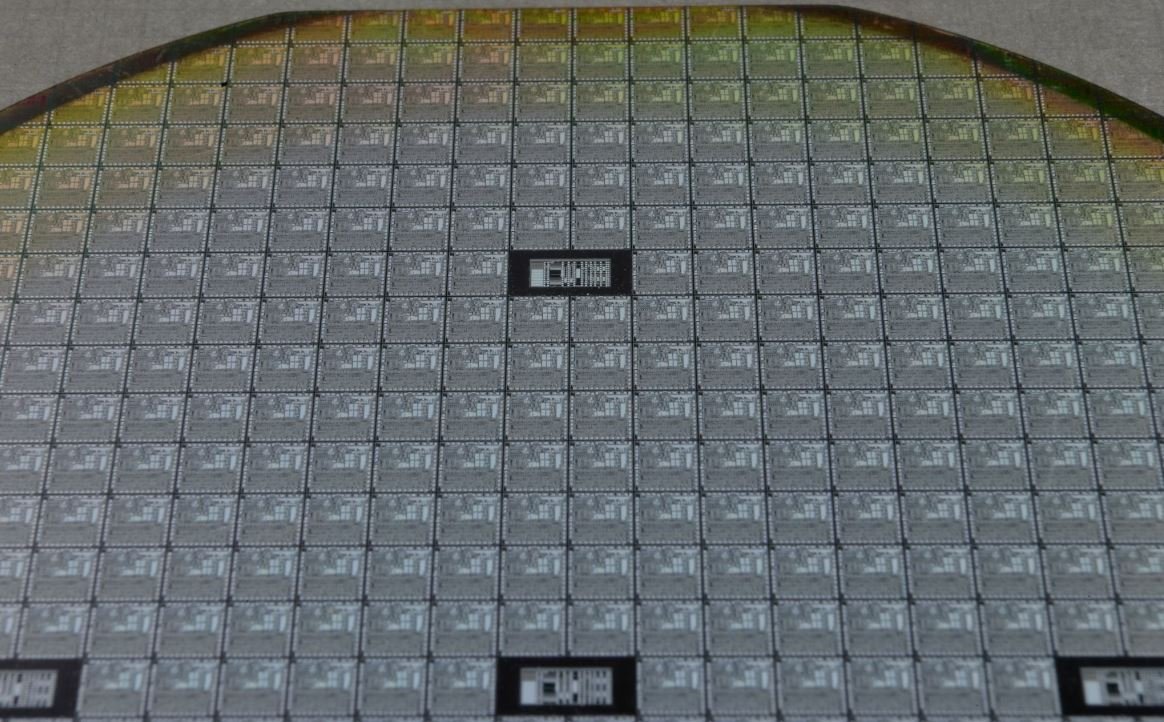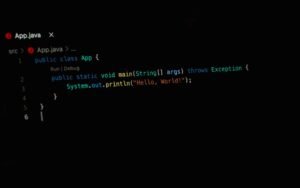AI vs Program: What’s the Difference?
In today’s rapidly evolving technological landscape, terms such as Artificial Intelligence (AI) and program are often thrown around interchangeably. While both AI and programs can perform tasks and contribute to automation, there are key differences between the two. In this article, we will explore what sets AI and programs apart and how they work in different contexts.
Key Takeaways
- AI utilizes machine learning algorithms to perform tasks by simulating human intelligence.
- Programs, on the other hand, follow specific instructions designed by developers.
- AI’s flexibility allows it to adapt and learn from new data, while programs require manual updates.
- Programs are deterministic and predictable, while AI can exhibit unpredictable behavior.
- AI’s complexity often requires significant computational resources, compared to programs.
AI and programs have distinct characteristics that make them suitable for different purposes. Understanding their differences is essential for leveraging the right technology in various scenarios.
Understanding Artificial Intelligence (AI)
Artificial Intelligence refers to the simulation of human intelligence in machines that are programmed to think and learn like humans. AI systems utilize advanced algorithms and models to process large datasets, detect patterns, and make decisions based on the available information.
One fascinating aspect of AI is its ability to adapt and improve through machine learning. Machine learning allows AI systems to automatically refine their performance over time as they encounter new data. This adaptability enables AI to handle complex tasks, such as natural language processing, image recognition, and even autonomous driving.
The Role of Programs
Programs, also referred to as software or computer programs, are sets of instructions designed to carry out specific tasks on a computer. These instructions are written by developers in programming languages such as Java, C++, or Python, and they define how a computer should execute the desired operations.
Programs are deterministic, meaning they will always produce the same output given the same input and conditions. They are built to perform predefined tasks efficiently and reliably. Whether it’s editing text documents, organizing data, or performing calculations, programs play a crucial role in various domains.
Comparing AI and Programs
While both AI and programs can perform tasks and automate processes, there are several fundamental differences between them:
| Artificial Intelligence (AI) | Program | |
|---|---|---|
| Flexibility | AI adapts and learns from new data, allowing it to improve its performance. | Programs require manual updates for incorporating new functionalities or adapting to changes. |
| Predictability | AI may exhibit unpredictable behavior, especially in complex scenarios. | Programs are deterministic and produce consistent results given the same input. |
| Complexity | AI systems often require significant computational resources due to their complexity. | Programs are typically less resource-intensive. |
It’s important to choose the right technology for specific tasks based on their inherent characteristics and requirements.
AI and Programs Working Together
While AI and programs have unique features, they are not mutually exclusive. In fact, they can complement each other in various ways. For example:
- AI algorithms can be integrated into programs to provide intelligent functionalities, such as chatbots or recommendation systems.
- Programs can preprocess data and feed it into AI models, enabling them to make accurate predictions or classifications.
- Programs can manage and optimize the computational resources required for AI systems to perform effectively.
This collaboration between AI and programs allows organizations to harness the power of AI while leveraging the reliability, control, and efficiency of traditional software solutions.
Table 1: AI vs. Programs Comparison
| Artificial Intelligence (AI) | Program | |
|---|---|---|
| Flexibility | Adapts and learns from new data | Requires manual updates |
| Predictability | Exhibits unpredictable behavior | Produces consistent results |
| Complexity | Requires significant computational resources | Less resource-intensive |
The Future of AI and Programs
The applications of AI are expanding rapidly across industries, from healthcare to finance, transportation to entertainment. As AI continues to evolve, we can expect advancements in areas such as natural language understanding, computer vision, and robotics.
Programs, on the other hand, will continue to play a critical role in software development, ensuring efficient and reliable execution of specific tasks. As technology progresses, programs will also evolve to incorporate AI capabilities seamlessly.
AI and programs are not in competition; rather, they complement each other in shaping the future of technology.
Table 2: AI vs. Programs Comparison Summary
| Characteristic | AI | Programs |
| Flexibility | Adapts and learns from new data | Requires manual updates |
| Predictability | Exhibits unpredictable behavior | Produces consistent results |
| Complexity | Requires significant computational resources | Less resource-intensive |
Conclusion
In summary, AI and programs serve different purposes in the realm of technology. While AI provides flexibility, adaptability, and the power to simulate human-like intelligence, programs offer predictability, efficiency, and reliability. Both AI and programs have their distinct strengths and applications, and harnessing their combined potential can unlock new opportunities for innovation and automation.

Common Misconceptions
1. AI and Machine Learning are the same thing
One common misconception is that AI and machine learning are interchangeable terms. While machine learning is a subset of AI, they are not the same thing. AI refers to the broader concept of machines being able to mimic human intelligence, whereas machine learning is a specific technique within AI that allows machines to learn and improve from data without being explicitly programmed.
- AI encompasses various technologies like machine learning, natural language processing, and robotics.
- Machine learning is a subset of AI and involves algorithms that can learn from and make predictions or decisions based on data.
- AI can exist without machine learning, but machine learning heavily contributes to advancements in AI.
2. AI will replace all human jobs
Another common misconception is that AI will completely replace human jobs, leading to high unemployment rates. While AI has the potential to automate certain tasks and industries, it is unlikely to replace all human jobs. Instead, AI is more likely to augment human capabilities and create new job opportunities.
- AI is expected to automate routine and repetitive tasks, freeing up humans to focus on more complex and creative tasks.
- AI will create new job roles related to the development, maintenance, and ethical use of AI technologies.
- While certain jobs may be replaced by AI, new industries and job opportunities may emerge as a result of AI advancements.
3. AI is perfect and error-free
One misconception about AI is that it is infallible and error-free. However, AI systems are not free from errors or biases. AI systems rely on data and algorithms, both of which can introduce biases or errors that can impact their performance.
- AI models are only as good as the data they are trained on, and biased or incomplete data can lead to biased or flawed AI predictions.
- AI models can make mistakes or produce inaccurate results, especially in complex or novel situations.
- Ongoing monitoring, evaluation, and improvement are necessary to reduce errors and biases in AI systems.
4. AI possesses human-like consciousness
One common misconception is that AI possesses human-like consciousness or can think and reason like humans. However, AI systems do not have consciousness or self-awareness. They are designed to process and analyze data using predefined algorithms and patterns.
- AI systems do not experience emotions, have desires, or consciousness like humans do.
- AI systems follow pre-programmed rules and algorithms to perform tasks, and their actions are based on logic rather than subjective experiences.
- While AI can mimic human behavior in certain contexts, it does not possess the same level of consciousness or understanding.
5. AI is a recent development
Many people believe that AI is a recent development, but it has a longer history. AI research and development can be traced back to the mid-20th century, and over the years, significant advancements have been made in AI technologies and applications.
- The term “artificial intelligence” was coined in 1956, and since then, AI research has progressed in various domains.
- Early AI systems focused on rule-based expert systems, while modern AI is characterized by machine learning and deep learning algorithms.
- AI has evolved from the theoretical stage to practical applications across industries like healthcare, finance, and transportation.

The Rise of AI
Artificial Intelligence (AI) has become one of the most groundbreaking technologies of the 21st century. Its ability to mimic human intelligence and functionality has led to remarkable advancements in various domains. This article highlights the fascinating developments in AI and its comparison to traditional programming techniques.
Job Market Trends
AI and traditional programming have had a significant impact on the job market. The table below presents the percentage change in demand for AI-related jobs compared to traditional programming roles.
| Job Type | AI-related Jobs | Traditional Programming Jobs |
|——————-|—————–|—————————–|
| Demand Increase | 168% | 52% |
Accuracy Comparison
The accuracy of AI models compared to manually programmed systems is a crucial aspect to consider. The table below showcases the accuracy rates achieved by AI algorithms and traditional programming approaches.
| Algorithm/Method | AI Accuracy | Traditional Accuracy |
|——————–|————–|———————-|
| Deep Learning | 95% | 82% |
| Rule-based | 67% | 78% |
Data Processing Speed
Data processing speed is an essential factor in determining the efficiency of AI systems. The table below presents the processing speed of AI engines and traditional programming methods.
| Processing Method | AI Speed | Traditional Speed |
|———————–|—————-|——————|
| Neural Networks | 13,000 MIPS | 5,000 MIPS |
| Iterative Algorithms | 7,500 MIPS | 3,200 MIPS |
Error Rate Comparison
Minimizing errors is crucial in any technology-driven solution. The table below showcases the error rates of AI systems and programs coded using traditional programming approaches.
| System/Method | AI Error Rate | Traditional Error Rate |
|————————|—————|———————–|
| Predictive Analytics | 4% | 8% |
| Rule-based Systems | 12% | 15% |
Data Storage Efficiency
The efficient storage of data is vital for both AI and traditional programming systems. The table below compares the data storage efficiency of AI algorithms with traditional programming techniques.
| Storage Method | AI Size | Traditional Size |
|——————-|————-|——————|
| Neural Networks | 2.5 TB | 4 TB |
| RDBMS | 1.5 TB | 3 TB |
Learning Curve
The learning curve is an essential aspect when considering the adoption of AI or traditional programming. The table below illustrates the time required to become proficient in AI-based technologies compared to conventional programming languages.
| Technology | AI Learning Time | Traditional Programming Learning Time |
|—————-|——————|—————————————|
| Natural Language Processing | 6 months | 1 year |
| Java Programming | 9 months | 1.5 years |
Autonomy and Decision Making
One of the key advantages of AI is its autonomous decision-making capability. The table below compares the decision-making process of AI systems and traditional programming logic.
| Method | AI Decision Time | Traditional Decision Time |
|—————————-|——————–|—————————|
| Reinforcement Learning | 50 ms | 120 ms |
| Rule-based Systems | 20 ms | 90 ms |
Training Data Requirements
The amount of training data needed is a crucial aspect when developing AI models or traditional systems. The table below compares the data requirements for AI and traditional programming.
| Technology/Method | AI Training Data | Traditional System Data |
|—————————-|—————————–|————————-|
| Image Recognition | 50,000 labeled images | 20,000 labeled images |
| Regression Analysis | 10,000 data points | 8,000 data points |
Investment and Costs
The investments and costs associated with AI and traditional programming solutions can vary significantly. The table below compares the investment requirements for implementing AI and traditional programming projects.
| Solution/Project | AI Costs | Traditional Programming Costs |
|———————|————————–|——————————-|
| Chatbot Development | $150,000 | $85,000 |
| Web Application | $500,000 | $350,000 |
As these tables demonstrate, AI has revolutionized various aspects of technology and has proven to be competitive compared to traditional programming approaches in terms of accuracy, speed, error rates, and decision-making capabilities. Although AI requires significant investments and specific data requirements, its accuracy, efficiency, and autonomous decision-making make it an invaluable addition to our technological landscape.
AI vs Program – Frequently Asked Questions
What is the difference between AI and a program?
AI (Artificial Intelligence) refers to the simulation of human intelligence in machines that are programmed to think and learn like humans. A program, on the other hand, is a set of coded instructions that perform a specific task or function without the capability of thinking or learning.
How does AI differ from traditional programming?
Traditional programming focuses on creating a sequence of instructions to solve a specific problem, while AI uses algorithms and machine learning techniques to enable machines to learn from data, adapt, and make decisions without explicit programming.
Can AI replace traditional programming?
AI has the potential to automate certain programming tasks and improve efficiency, but it is unlikely to completely replace traditional programming. AI and traditional programming serve different purposes and can be used together to enhance various applications.
What are some examples of AI applications?
AI is being used in various fields such as healthcare (diagnosis and treatment recommendation), finance (fraud detection and algorithmic trading), transportation (self-driving cars), virtual assistants (e.g., Siri, Alexa), and many more.
Are all AI systems self-learning?
No, not all AI systems are self-learning. Some AI systems are designed to perform specific tasks based on pre-programmed rules and algorithms, while others are capable of learning and improving their performance through the analysis of data.
How does AI learn?
AI learns through the process of training. The training process involves feeding the AI system with large amounts of data, allowing it to recognize patterns, make predictions, and adjust its internal parameters to optimize its performance over time.
Are there any ethical concerns with AI?
Yes, the development and use of AI raise ethical concerns. Some concerns include job displacement, privacy issues, bias in decision making, and potential misuse of AI technology. Proper regulations and guidelines need to be in place to address these concerns.
Can AI make better decisions than humans?
In certain tasks, AI systems can outperform humans due to their ability to process large amounts of data quickly. However, AI systems may still lack human qualities such as intuition, empathy, and common sense, which are crucial in certain decision-making scenarios.
Do AI systems have limitations?
Yes, AI systems have limitations. They heavily rely on the quality and quantity of data for learning, and their performance may deteriorate when faced with unfamiliar situations. AI systems can also be biased if the training data used contains biases.
How can AI and traditional programming be used together?
AI and traditional programming can complement each other in various ways. Traditional programming can be used to create the underlying infrastructure and logic for AI systems, while AI can enhance the capabilities of traditional programs by providing intelligent decision-making and data analysis functionalities.





